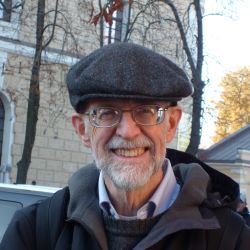- About NAEP
- Membership
- NAEP Chapters
- Working Groups
- Events and Programs
- Awards/Scholarships
- Resources
John Perkins
NAEP experience John Perkins joined NAEP in the early 1980s because of its then almost unique focus on environmental problem-solving. Very few alternatives existed, and NAEP looked like a good group. So, John joined, received The Environmental Professional, and published an article in it, which was the extent of his experience till the mid-1990s. John finally attended my first conference in response to an invitation to discuss the establishment of a body to accredit academic environmental programs. A group to accredit university programs never developed, but at the meeting, John began personal friendships with current and former editors-in-chief of The Environmental Professional. At the next time for editorial change, he was encouraged to apply to be the new editor. Which he did, and was chosen in 1995. Not without challenges, to be sure, but overall he found this very rewarding! John served as editor-in-chief of the renamed Environmental Practice until retirement from his day job in 2008. While an editor, he also received the CEP, contributed presentations for the annual conferences, and in 2019, coordinated a track on climate change. In 2014, John was elected a Fellow, an honor that took him very much by surprise. Professional experiences From John's undergraduate days, he thought being a professor looked like a good job. Undergraduate and graduate degrees in biology, followed by post-doctoral experience in history of science, led him to pursue making environmental studies an academic reality. From 1971 – 1974, however, he detoured to a job with the National Research Council/National Academy of Sciences. As chief staff officer for a study on pesticides and the environment, John received his second graduate education, vastly expanding his understanding of agriculture, public policy, politics, and environmental problem-solving. He left Washington, D.C., in 1974 for academia. Personal and environmental commitments John's formal education, stretching through the 1960s, was entirely in “disciplinary modes,” i.e. one was not to stray far from the home department. By the time of his PhD in 1969, however, the great environmental reformations of the 1960s were in full swing. Congress passed NEPA and many other laws; President Nixon organized the EPA. But solving environmental problems couldn’t rely on people educated in just one “home department.” John Perkins joined a new faculty to organize an undergraduate, interdisciplinary degree program at Miami University (Ohio). Despite the challenges, they did it, an experiment that has repeated itself many times in almost all universities. From Ohio, he went as a Senior Academic Dean to The Evergreen State College in Olympia, WA, another pioneering school. There, John helped lead the formation of a master’s degree in environmental studies, a degree virtually unknown at the time (1983), but now with counterparts in many places. He served as director of the graduate program from 1999 – 2005. After retirement from his day job in 2008, John committed to writing about energy and climate change with his original academic goal: how can academia help students prepare to work on environmental problems? Overall, John feels very lucky, because his personal and environmental commitments have always exactly matched him professional and academic ones. |




